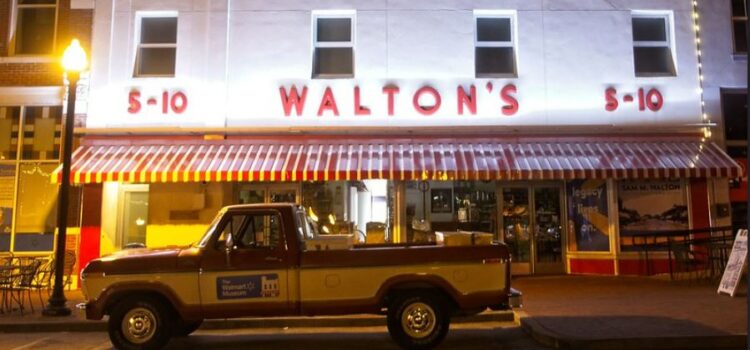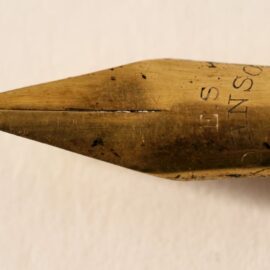

This article is an excerpt from the Shortform book guide to "Sam Walton: Made in America" by Sam Walton. Shortform has the world's best summaries and analyses of books you should be reading.
Like this article? Sign up for a free trial here .
What is the origin of Wal-Mart? How did Wal-Mart go from a small five and dime in Arkansas to a multinational superstore?
Sam Walton, the founder of what is now Wal-Mart, opened his first five and dime store in 1950. Within four years, he would open a second store and by 1962 he would own 16 stores. The Walton Five and Dime grew rapidly thanks to Walton’s superior pricing and business sense.
Continue reading to learn more about the origin of Wal-Mart.
The Beginning of Wal-Mart
Now armed with the experience and strategies of his previous store, Sam Walton set his eye on expansion, with the goal of setting up more stores in the local area. In 1954, he opened a store in a suburb in Kansas City, and by 1962 he would own 16 stores in Arkansas, Missouri, and Kansas. He also began moving away from the Ben Franklin franchise, naming the new stores “Walton’s Five and Dime.” This was the origin of Wal-Mart as we know it.
Critically, he believed the large retail companies (such as Woolworth) underestimated the opportunity available in small towns. Competitors specialized in metropolitan areas, servicing large populations. Instead, Walton felt that there were thousands of small towns like Bentonville that were being ignored. If Walton’s stores could offer superior pricing and selection locally, he knew customers would prefer to shop there instead of driving into the city.
Wal-Mart Transforms
By 1960, Walton had built up to 15 stores with $1.4 million in sales, but this wasn’t satisfying enough. Walton now saw two threats (and potential opportunities):
- The rise of massive superstores, with over 100,000 square feet of floor space
- The rise of discount stores, which were disrupting traditional department stores.
Rather than be disrupted by both of these seismic trends, Walton chose to take advantage of them. Where he had previously built five-and-dime variety stores, Walton would now embark on the path that Wal-Mart is now known for today—large discount stores.
In 1962, the first Wal-Mart discount store was established in Rogers, Arkansas, with 18,000 square feet. It started as a moderate success at first (with $1 million in sales per year, compared to Sam’s benchmark competitor at $2 million in sales), but clearly it was doing better than their variety stores.
- Walton actually intended to partner with the owner of his former franchise in Newport (Butler Brothers) but they rejected his proposal to be their merchandiser. This put a bit of a chip on Sam’s shoulder and fueled his drive to succeed.
After two years, Wal-Mart began expanding to nearby towns. Competitors were starting to eye the discount store trend, so Walton needed to move fast. By 1968 they had 13 Wal-Marts; by 1969, they had 18.
Wal-Mart also continued to operate the business more systematically. They hired managers to set up a warehouse distribution center, formal accounting systems, and company communications. This would help build the economy of scale that would drive Wal-Mart’s relentless growth for decades to come.

———End of Preview———
Like what you just read? Read the rest of the world's best book summary and analysis of Sam Walton's "Sam Walton: Made in America" at Shortform .
Here's what you'll find in our full Sam Walton: Made in America summary :
- The story of Sam Walton and how he started Wal-Mart
- How Wal-Mart grew from a single five and dime store to one of the world's largest companies
- Sam Walton's retail strategies and management advice






